
Seafaring adventure tours

While German U-Boats are the most deadly component of the Third Reich’s naval arsenal, it had a sizeable fleet of battleships as well. The United States even used a surrendered German battleship, the Prinz Eugen, in early nuclear tests. While U-Boats were a cause of concern for Allied forces crossing the waters of the Atlantic, by far the most famous ship in the Kriegsmarine was the Battleship Bismarck. So famous was it, in fact, that American country artist Johnny Horton released a song called “Sink the Bismarck” in 1960.
From very early in the war, Allied forces knew that the Bismarck was going to be a problem if it wasn’t taken care of. For starters, it had a big swastika on the deck that left no illusions to its allegiance, and it was one of the biggest fighting vessels in Europe. Allowing a ship like the Bismarck to sail unimpeded could have disastrous effects on shipping lanes in the Atlantic ocean.
The pride of the Kriegsmarine
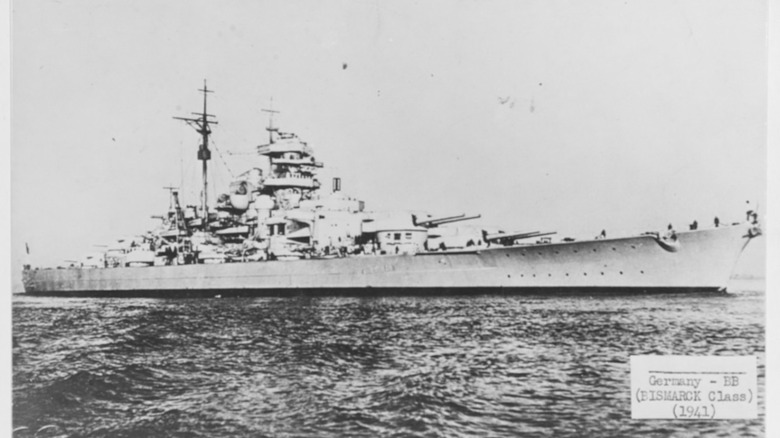
The Bismarck was significantly larger than the Nazis let on. Between World War I and World War II, treaties enforced the size and displacement of naval vessels. A displacement of 35,000 tons was the limit at the time of the Bismarck’s construction. With the final rivet in place in 1941, the Bismarck clocked in at 41,700 tons and 797 feet long. It was armed with eight 15-inch guns with shells that weighed more than 1,700 pounds. If that wasn’t fearsome enough, the Bismarck had more six-inch guns and all manner of anti-aircraft defenses.
If hurling projectiles the weight of a tractor wasn’t a good deterrence to any challengers from the Allies, its armor was enough to stop just about whatever was thrown at it. The United States Naval History and Heritage Command stated that the 13-inch thick steel armor could reportedly withstand shells up to and including 16 inches in diameter. The last part of the Bismarck’s fearsome bag of tricks was its tremendous speed. It had proven during testing that it was capable of sailing at over 37 miles per hour (32.5 knots).
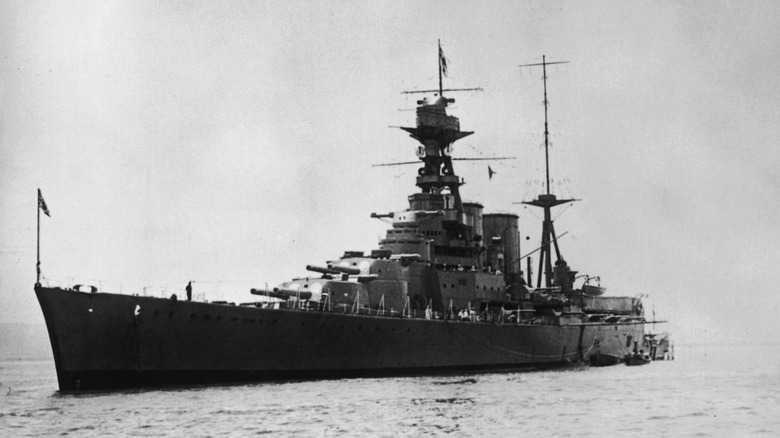
Alas, the British Royal Navy had its own vessel seemingly tailor-made to fight the Nazi sea monster before the war even started: the HMS Hood. The Hood, built in 1920, had a displacement of 42,462 tons and was over 860 feet long, making it bigger than the Bismarck by a significant margin. It boasted an impressive armament as well, with eight 15-inch guns with a range about 17 miles. It too was capable of a 37 miles per hour top speed. At least on paper, the HMS Hood and the Bismarck were fairly evenly matched, even though the Royal Navy’s ship was over two decades older.
The Bismarck and HMS Hood would meet in combat in the North Atlantic on May 24th, 1941, just a few days after the Bismarck first set sail for combat operations. The Nazi ship was escorted the battleship Prinz Eugen. Upon reaching a range of 25,000 yards, the Hood opened fire and hit the Bismarck, causing it to lose speed. Immediately, the Bismarck returned fire with three full salvos, cracking the HMS Hood in half and sinking it with a lucky hit. The total time elapsed from first contact to the HMS Hood sinking under the waves was less than half an hour. Ultimately, 1,415 Royal Navy sailors lost their lives.
The Royal Navy decided that the Bismarck needed to go down as quick as possible. As Johnny Horton’s song said “When we find the Bismarck, we gotta’ cut her down.”
Bested by biplanes
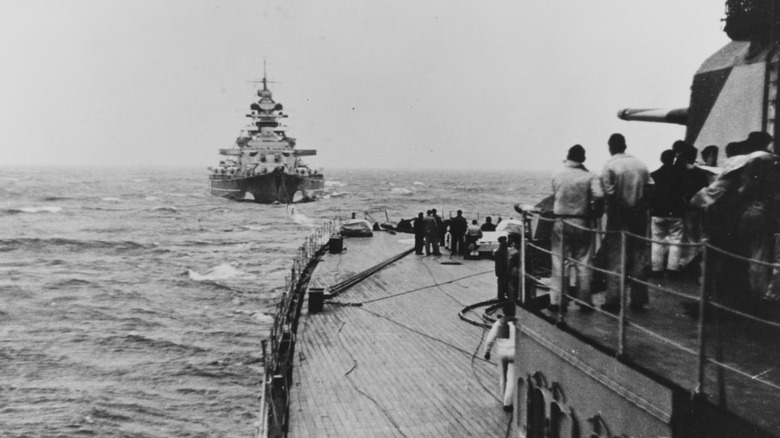
After sinking the HMS Hood, the Bismarck seemingly disappeared as it proved to be rather stealthy for a nearly 800 foot long ship. Reportedly, the Nazi vessel was on its way to France to regroup with Axis forces. Eventually, on the morning of May 26th, the Bismarck was spotted, and four Royal Navy ships, including the aircraft carrier Ark Royal kicked it into high gear to track and take the Bismarck down.
It was here that the battle with the Bismarck would mirror the future airpower-centric Pacific Ocean engagements between the United States and Imperial Japan as the Ark Royal’s 15 Fairey Swordfish torpedo bombers launched an attack on the Bismarck that irreparably jammed its rudders and crippled its ability to steer. The Swordfish on the surface looks like an odd plane to engage one of the most high-tech vessel on the seas, as it’s a biplane from the 1930s. But given that it had a top speed of just 94 miles per hour, it was slow enough and low enough that it could mostly evade enemy anti-aircraft fire. Plus, the Bismarck’s crew had been awake and working to keep the Bismarck speeding towards France since it had sunk the HMS Hood.
Sailing in circles
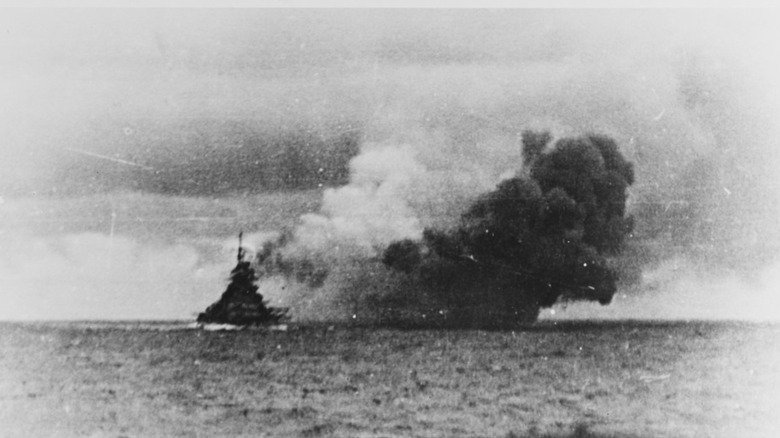
Perhaps completely unaware of the danger the Bismarck was in, given its complete inability to maneuver and the British Navy closing in, Admiral Gunther Lutjens received a message from Adolf Hitler himself that stated “All our thoughts are with our victorious comrades.” The Nazi Admiral, more focused on the mission ahead (and probably upset that the pride of the Third Reich’s Navy was just bested by biplanes) snapped back “Ship unmaneuverable; we shall fight to the last shell.” And fight they did.After a long night of just sailing in circles, the Bismarck found itself surrounded on the morning of May 27th. Royal Navy ships the Rodney, the King George V, and the Norfolk opened fire on the Bismarck, hurling at it every ounce of ordnance possible, out of revenge for sinking the HMS Hood. After a full 90 minute barrage of continuous fire by the Royal Navy, the Bismarck’s guns fell silent. Whether by a miracle or incredible precision, fires onboard the Bismarck disabled the ship’s ability to answer to the shelling and most of the command crew and officers were killed shortly after the British opened fire.
The end of the Bismarck
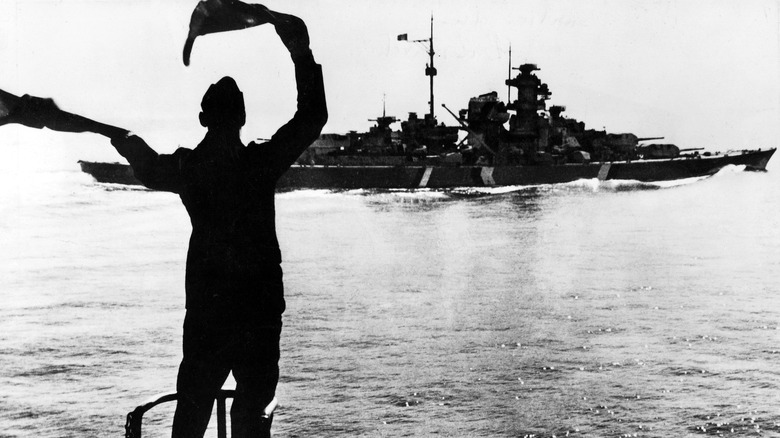
There is debate about what exactly happened to the Bismarck in its final moments before it gave up the ghost. On one account, torpedoes from the British cruiser Dorsetshire ultimately did the vessel in. With another, the Bismarck’s own remaining crew scuttled the ship and brought it down of their own accord in an effort to keep the ship’s technology out of British hands. Either way, the Bismarck sunk on May 27th, 1941. Around 2,000 members of the Nazi Kriegsmarine lost their lives in the engagement.
The Bismarck would land at the bottom of the Atlantic where it remained relatively undisturbed for more than 40 years, until 1989, when it was found 15,000 feet under the waves by ocean explorer Robert Ballard, the same man who also found the wreck of the RMS Titanic a few years earlier.
The Bismarck was at sea a total of eight days before it died in a blaze of gunfire at the determination of the Royal Navy. The Nazis put a lot of stock in their super-ship, and it wasn’t long before it had them sailing in circles before it was reduced to a several thousand ton rusting hulk at the bottom of the ocean.





